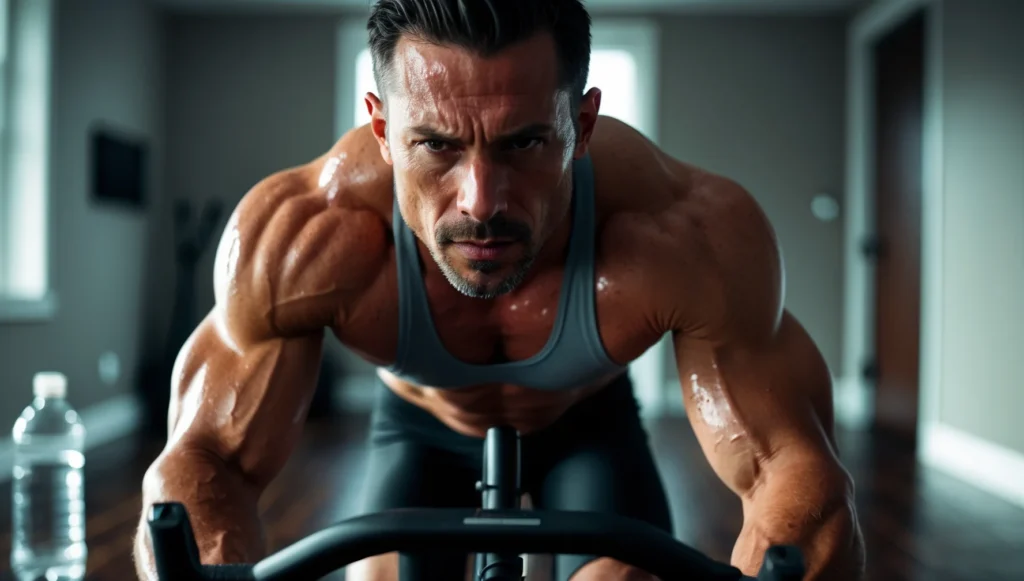Staying active is one of the most effective ways to maintain vitality and independence after 50. regular exercise not only strengthens your body but also improves mental clarity, emotional well-being, and overall quality of life. in this guide, we’ll explore the best exercises tailored for men over 50, along with tips to help you get started safely.
Why Is Exercise Important for Men Over 50?
As we age, muscle mass decreases, joints become stiffer, and metabolism slows down. these changes can lead to weight gain, reduced mobility, and a higher risk of chronic conditions like heart disease and diabetes. regular exercise counteracts these effects by building strength, improving flexibility, and boosting cardiovascular health.
What Are the Benefits of Regular Exercise?
Incorporating exercise into your routine offers numerous benefits, including:
- Increased muscle mass and strength
- Improved balance and reduced risk of falls
- Enhanced cardiovascular health and endurance
- Better joint mobility and flexibility
- Reduced stress and improved mental health
“exercise is medicine—it’s never too late to start.”
How Much Exercise Do You Really Need?
The american heart association recommends at least 150 minutes of moderate-intensity aerobic activity or 75 minutes of vigorous activity per week, combined with strength training twice a week. breaking this into smaller sessions, such as 30 minutes a day, makes it more manageable.

Types of Exercises to Incorporate
To maximize the benefits of exercise, it’s important to include a mix of activities that target different aspects of fitness: cardiovascular health, strength, balance, and flexibility.
Cardiovascular Workouts
Cardiovascular exercises strengthen your heart and lungs while burning calories. they’re ideal for improving endurance and maintaining a healthy weight.
Examples of Cardio Exercises
- Walking: A low-impact activity that’s easy on the joints and requires no equipment. aim for brisk walking to elevate your heart rate.
- Cycling: Whether outdoors or on a stationary bike, cycling is excellent for cardiovascular health and leg strength.
- Swimming: A full-body workout that’s gentle on the joints, making it perfect for men with arthritis or joint pain.
- Rowing: Combines cardio and strength training, engaging both upper and lower body muscles.
Tips for Getting Started
Start with shorter sessions, such as 10-15 minutes, and gradually increase the duration. use a fitness tracker to monitor your heart rate and ensure you’re working at a moderate intensity.
Strength Training
Strength training is crucial for preserving muscle mass and bone density, both of which decline with age. it also supports joint health and reduces the risk of injury.
Examples of Strength Exercises
- Bodyweight Exercises: Push-ups, squats, and lunges are simple yet effective for building strength without equipment.
- Resistance Bands: Lightweight and portable, resistance bands provide adjustable resistance for various exercises.
- Weightlifting: Using dumbbells or machines at the gym helps build muscle and improve metabolism.
Sample Strength Routine
| Exercise | Reps/Sets | Focus Area |
|---|---|---|
| Squats | 10-12 reps, 2 sets | Legs and glutes |
| Push-Ups | 8-10 reps, 2 sets | Chest and arms |
| Dumbbell Rows | 10 reps, 2 sets | Back and shoulders |
| Plank | 20-30 seconds, 2 sets | Core stability |
Balance and Flexibility Exercises
Balance and flexibility are essential for preventing falls and maintaining mobility. these exercises also promote relaxation and reduce muscle tension.
Examples of Balance and Flexibility Exercises
- Yoga: Improves flexibility, balance, and mental focus. poses like the tree pose and warrior pose are particularly beneficial.
- Tai Chi: A gentle martial art that enhances coordination and mindfulness.
- Standing on One Leg: A simple exercise you can do at home to improve stability.
Tips for Improving Balance
Practice balance exercises near a wall or chair for support. as you gain confidence, try performing them without assistance.

How to Stay Safe While Exercising
While exercise is beneficial, it’s important to prioritize safety to avoid injuries. here are some tips to keep in mind:
Warm Up and Cool Down
Always begin with a 5-10 minute warm-up to prepare your muscles and joints. end with a cool-down session to stretch and relax your body.
Listen to Your Body
Pay attention to how your body feels during exercise. if you experience pain (not to be confused with normal muscle soreness), stop immediately and consult a healthcare professional.
Stay Hydrated
Drink water before, during, and after exercise to prevent dehydration, especially if you’re working out in hot weather.
Frequently Asked Questions About Exercising After 50
Can You Start Exercising If You’ve Been Inactive for Years?
Absolutely! it’s never too late to start. begin with low-impact activities and gradually increase intensity as your fitness improves.
What If You Have Joint Pain or Other Health Conditions?
Consult your doctor before starting any new exercise program. they can recommend modifications to suit your needs and ensure safety.
How Long Does It Take to See Results?
Consistency is key. with regular exercise, you may notice improvements in energy levels and mood within weeks, while physical changes take longer.



